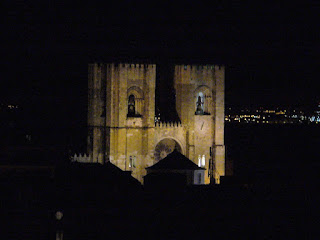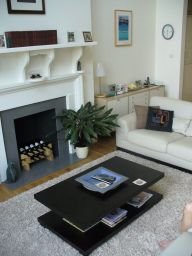I really needed to escape. After four days inside a Lisbon hotel, I needed some open space and fresh, unfiltered air. By chance, I found the perfect antidote to conference room hell - the town of Sintra. 40 minutes by train from downtown, it's home to some of the most memorable Portuguese Romantic architecture you'll ever see. I'm inclined to call it Disneyland Among the Cork Trees.
The town has an endless array of unusual, sometimes colourful, buildings built in the 1880s. Many sit atop hills, commanding stunning views of the Atlantic coast and the hills surrounding the fringes of a distant Lisbon.
My first stop was Palácio Nacional de Pena, a drawbridge-accessed palace that's simply a glorious conglomeration of turrets and domes awash in red and yellow pastels. The final kings of Portugal lived in the Pena Palace, the last of whom -- Dom Manuel II -- went into exile in England in 1910 after a republican revolt. The pseudo-medieval structure, with its ramparts, towers, and great halls, has a rich, sometimes vulgar, and often bizarre collection of Victorian and Edwardian furniture, ornaments, and paintings.
To reach this hilltop castle I caught a sardine-packed local bus that wound its way through narrow, walled-lined laneways before filling reaching the palace entrance. I had hoped to explore the building and its grounds, but the lengthy queue at its gate deterred me. With so little time to spend in Sintra, I wanted to remember anything other than a queue.
As a result, I walked a few hundred metres back down the hill to Castelo dos Mouros. Only the ruins if this 9th-century Moorish Castle still stands today, but the extent of these gives a fine impression of the solid fortress that finally fell from Moorish hands when it was conquered by Dom Afonso Henriques in 1147.
It's visible from various points in Sintra itself. Panoramic views from the castle's serrated walls help explain why Moorish architects chose the site. The battlements also afforded postcard views back toward Pena Palace. After an hour of clambering over stone ruins, I wandered back down the hillside to the town itself. This walk, off the beaten track, was truly magic.
There has probably been a palace here since Moorish times, although the current structure, also known as the Paço Real, dates from the late 14th century. The property was the summer residence of the House of Avis, Portugal's royal line, and it displays a fetching combination of Moorish, Gothic, and Manueline architectural styles.
















































